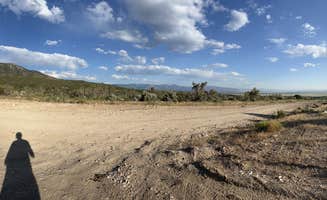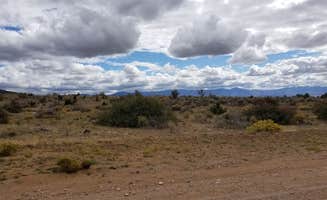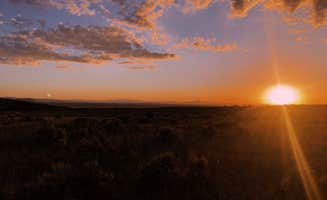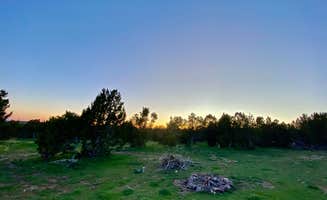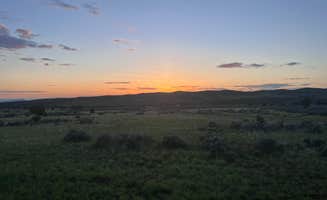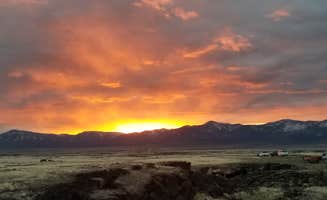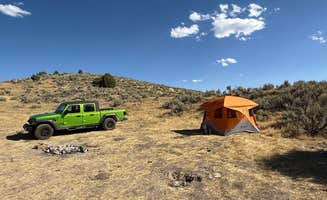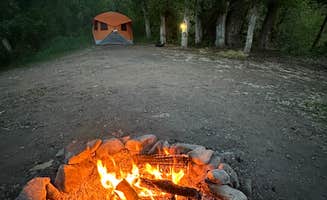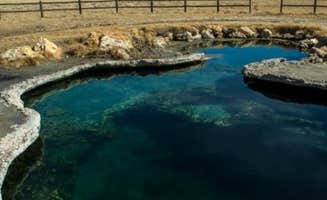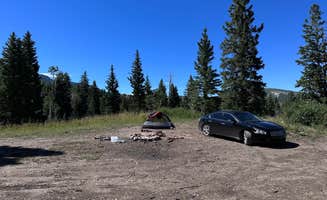Dispersed camping opportunities near Lynndyl, Utah provide rustic outdoor experiences in the high desert terrain of central Utah. The area sits at approximately 4,700 feet elevation and experiences a semi-arid climate with hot summers and cold winters. Most primitive camping sites in this region lie on Bureau of Land Management (BLM) or U.S. Forest Service land, offering undesignated spots with variable road conditions depending on recent weather.
What to do
Explore lava tubes: Pahvant Valley Heritage Trail offers unique geological features for exploration. "This is a primitive spot no tables or fire pits. You can camp in the lava tube they are warm in the winter and it is a fun place to explore," notes Brad B. from Pahvant Valley Heritage Trail Dispersed.
Soak in hot springs: Located about 30 miles northwest of Lynndyl, Baker Hot Springs provides multiple natural pools for relaxation. "Multiple pools varying temps from 85-110'f. Some creeks burn your toes 180'f," reports Athena M. from Baker Hot Springs Dispersed Camping.
Wildlife viewing: Several camping areas provide excellent opportunities to see native animals. "We are in a Toyota Camry and just hammocking. This spot worked out nicely," shares Valorie H. about Fish Lake National Forest Campsite, where campers often report seeing wildlife at dawn and dusk.
What campers like
Easy access to remote spots: Many dispersed camping areas offer quick access from highways while maintaining a wilderness feel. "Remote but not far. Not far off the main roadway. Lots of shade. Open fields, so watch out for cows and cowpoo!" reports Brianne G. about Fish Lake National Forest Campsite.
Cell service: Despite the rustic setting, several camping areas maintain reasonable connectivity. "I could hear some road noise, but had 3+ bars of T-mobile 5g service. Not another person in sight except for maybe 2 cars that drove by during the night," notes Paul A. from Dispersed West Fork 8 Mile Road.
Solitude on weekdays: Most primitive camping locations remain relatively uncrowded during non-peak times. "Super quiet despite being so close to the interstate," reports Kristy B. about camping in the Fish Lake National Forest area, a sentiment echoed across multiple camping locations.
What you should know
Variable road conditions: Access to many sites requires driving on unpaved roads that can deteriorate with weather or distance. "The drive in past the pavement was dusty, but not horrific. The road had been graded so there a lot of rocks on the surface of the road. No washboard," reports Steve H. from Pahvant Valley Heritage Trail Dispersed.
Limited amenities: Most sites lack basic facilities. "We pulled in after sunset to stop before going all the way north to SLC. The road was pretty doable in our truck, but it think it would be easy in a sedan too," shares Megan W., noting the simplicity of Fish Lake National Forest Campsite.
Wildlife encounters: Be prepared for potential wildlife interactions. "As I was laying in my sleeping bag inside my tent around 11pm, some creature started stalking me around midnight. I could hear it moving and breathing outside my tent. I managed to scare it off by hitting my car's 'panic button' on the keys," cautions Ean P. from Fish Lake National Forest Campsite.
Tips for camping with families
Shorter hikes for kids: Areas with accessible terrain make family camping more enjoyable. "The area is beautiful with lots of cattle around. We pulled into this spot at around 5pm. We saw two spots in total right next to each other but there may be more a bit up the road," reports Trysten about West Fork 8 Mile Road.
Campfire preparation: Bring your own wood as gathering may be limited. "A fair amount of fallen pine and juniper wood there to use for building fires. Just remember to drown out your fires with water (there's a sign)," advises Ean P. about camping in the Fish Lake National Forest area.
Cleanliness concerns: Some dispersed sites show evidence of previous use. "There's a lot of trash and shot up cans at both sites but it didn't ruin the surrounding beauty," reports Trysten about Cherry Creek Campsites, where the flowing creek provides natural white noise for sleeping children.
Tips from RVers
Size limitations: Most primitive sites accommodate smaller RVs better than large rigs. "We are full-timers and have a 36 ft Class A with a Cherokee Trailhawk tow. The second half of the~7 mile gravel road in is a little washboarded in places, but not too bad if we kept it under 30 mph or so," shares Ray & Terri F. about Baker Hot Springs Dispersed Camping.
Level parking concerns: Finding flat spots for RVs can be challenging in some areas. "Stop on our way North in our van with our 2 kids. Camp was relatively flat, good trees for shade and elevated to allow for nice views and a breeze," reports Chula R. about camping along Whiskey Creek Road.
Weather contingencies: Be prepared for rapid weather changes that can affect road conditions. "The camping areas could be a little sporty with any significant amount of rain. Some areas were fine, but others were very heavily rutted," notes Ray & Terri F. about the Baker Hot Springs area.


